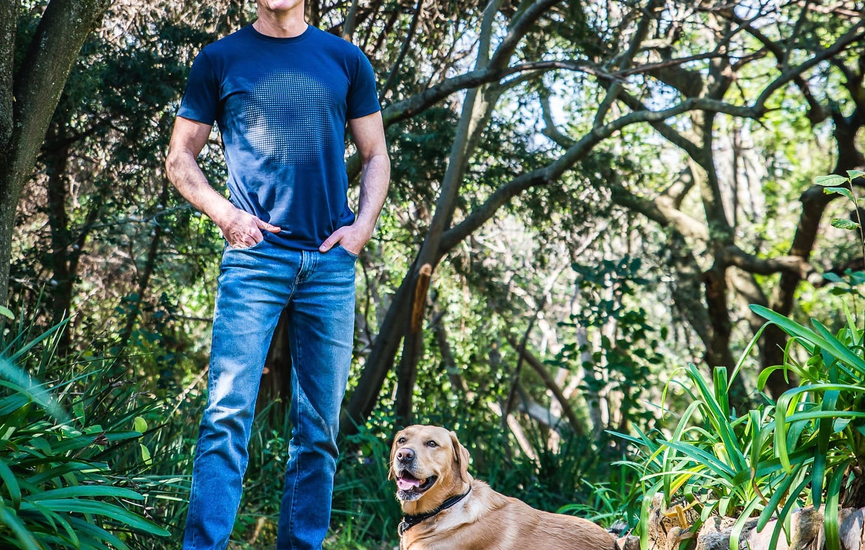Tucked in the heart of Johannesburg, The Wilds Nature Reserve has become one of the city's most remarkable revival stories. Once a neglected, overgrown 40-acre land avoided by most, it is now the city's top park, attracting over 10,000 visitors each month.
With lush greenery, unexpected wildlife, art installations, and expansive views, The Wilds is a true gem at the city's core. This transformation is credited to artist James Delaney, who led the effort to revitalize the park through years of dedication and community engagement.
When Johannesburg was established in 1886, the land now known as The Wilds was part of J.J. Grobler's portion of the Klipfontein farm. Located near the Witwatersrand watershed, the area was rocky and barren, with the Sandspruit River running through its kloof.
In 1889, the Houghton Syndicate purchased the land in search of gold but found none. Ownership later passed to the Johannesburg Consolidated Investment Company (JCI), founded by mining magnate Barney Barnato. Recognizing the land's potential as a quiet escape from the mining chaos, JCI developed the surrounding suburb of Houghton beginning in 1896.
In 1924, as part of its efforts to attract affluent residents, JCI donated the original portion of the land to the city to be used as a public park. After the 1936 Empire Exhibition in Johannesburg, indigenous plants showcased at the event were relocated to The Wilds, establishing the park as a sanctuary for native flora.
In 1950, the park was dedicated to Jan Smuts with a commemorative plaque quoting Virgil: “Blessed too is he who learned to know the Gods of The Wilds.” Over the decades, The Wilds became connected with political figures like Bram Fischer and Violet Weinberg, who held Communist gatherings there in the 1950s and ’60s.
Water features were introduced in the 1950s, and a striking pedestrian bridge was built in 1965. The following year, JCI donated greenhouses to mark its 75th anniversary. The reserve is divided into two sections, the East and West sides, separated by the main road, Houghton Drive, but connected by the pedestrian bridge.
However, by the late 1990s and into the 2000s, the park fell into neglect and developed a reputation for crime, which kept many visitors away. Turning the Tide
James Delaney’s journey to restore The Wilds Nature Reserve began a decade ago when he moved into a Killarney apartment overlooking the neglected park. At the time, it was so desolate that no one dared to visit. Delaney’s daily walks with his dog, Pablo, sparked a desire for change. “It’s crazy that I live next to this huge green space, and I can’t go there,” he thought. Armed with clippers, he began clearing the overgrowth, discovering a hidden “Wonderland” of lakes, waterfalls, and bridges.

Photo: Joburg.co.za
What started as a solo project soon grew. Friends joined, staff were hired, and every weekend, they worked to restore the park—seeding, planting, and repairing old infrastructure. As the park, nearly a century old, began to heal, indigenous plants thrived under the renewed light.
Delaney formalized the restoration by signing a Memorandum of Understanding (MOU) with City Parks, which brought additional resources to the project.
Delaney’s Art and Volunteers
Despite the visible improvements, The Wilds still had a “fearsome reputation,” making it hard to convince people to visit. To change public perception, Delaney, an artist, used his creativity. He turned charcoal sketches of native animals into bright sculptures, and on Mandela Day 2017, installed 67 owl sculptures in the forest, honoring Mandela’s 67 years of public service.
The impact was immediate. Families flocked to the "Owl Forest," with children excitedly counting the sculptures. This installation became a draw, showing how art can help reimagine public spaces. Delaney continued to add more sculptures, like a kudu and a life-sized pink giraffe, encouraging visitors to explore further. These art pieces not only beautified the park but also activated the space, making it feel safer.
Today, new sculptures continue to appear, and there are no maps or guides—it's a treasure hunt for visitors to find them.
Volunteers were also pivotal in the park’s transformation. A Facebook group quickly grew to 10,000 members, allowing the community to contribute their skills and passion. Over 4,000 volunteers helped create a strong sense of public ownership. According to Delaney, this shift in attitude has made the park cleaner and more welcoming: “People feel it’s their park—our park.”
Challenges and Looking Forward
Restoring The Wilds wasn’t without its challenges. Delaney encountered numerous bureaucratic hurdles, including a rejected plan for a wheelchair-accessible path. Undeterred, he completed the path overnight using stockpiled materials, despite threats of arrest. By morning, the path was finished, and no one stopped him.
Relations with city authorities improved over time, culminating in the first joint planning session with City Parks in a decade, and a shared unveiling of a Mandela bench.
Today, The Wilds boasts six kilometers of restored paths, dozens of ponds, waterfalls, over 100 sculptures, and 50 mosaics. But for Delaney, the park’s true success lies in the community it has fostered. The park has become a space where people from all walks of life—whether from the city center or suburbs—gather, including many who once feared it.
Delaney, still working daily in the park, says it has transformed his life. Once a painter, he now designs landscapes and ships sculptures globally. “The Wilds reinvented my practice,” he says. Inspired by St. Francis and Tolstoy, he believes that giving is the key to connection and joy.
His message is clear: “Find a neglected space in your city and invest in it. You won’t just transform the space, it will transform you.”
